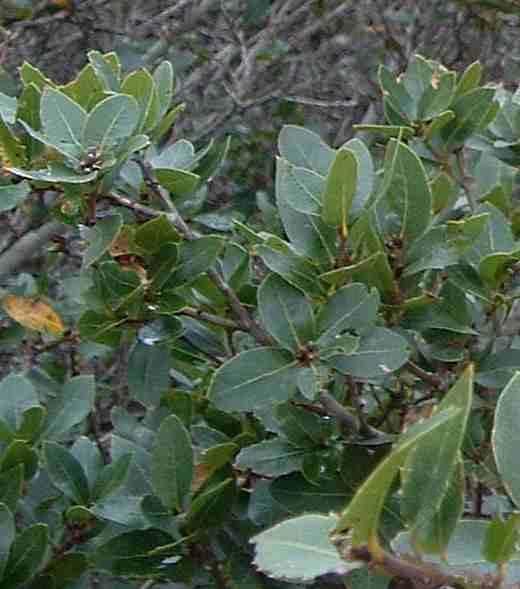Section Lobatae | Genus Quercus Rank Species | |
 | ||
Similar Quercus john‑tuckeri, Quercus wislizeni, Quercus pacifica, Quercus cornelius‑mulleri, Quercus sadleriana | ||
Quercus parvula is an evergreen red oak (Section Lobatae) found on north-facing Santa Cruz Island slopes and in the California Coast Ranges from Santa Barbara County north to Mendocino County. It was taxonomically combined with Quercus wislizeni until resurrected as a separate species by Kevin Nixon in 1980. The type locality is Palo Colorado Canyon in Monterey County.
Contents
Three varieties of Q. parvula are currently recognized:
Q. parvula differs morphologically from its close relative Q. wislizeni in the following ways:
Q. parvula and Q. wislizeni never produce newly emerging leaves with a velvety coating of red uniseriate trichomes on the abaxial (upper) surface. This separates them from Q. kelloggii and both varieties of Q. agrifolia which produce such leaves.
Ecology
Mainland Q. parvula is commonly found with or near Sequoia sempervirens (coast redwood), and often near Quercus agrifolia var. agrifolia (coast live oak) and Notholithocarpus densiflorus (tanoak).
Q. parvula differs ecologically from Q. wislizeni in the following ways:
Hybridization
Quercus parvula is theoretically capable of hybridizing with all of the other California red oaks except the higher elevation southern California Quercus agrifolia var. oxyadenia (sharpacorn oak) from which it is separated by the Transverse Ranges. However Q. parvula's generally later flowering time (April–May versus February–April for Q. kelloggii, Q.wislizeni and Q. agrifolia) may limit genetic exchange with other Lobatae.
DNA studies currently in progress may show that Tamalpais oak is an intermediate form between Q. parvula and Q. kelloggii and may also more clearly define the relationship between the other two varieties of Q. parvula.
